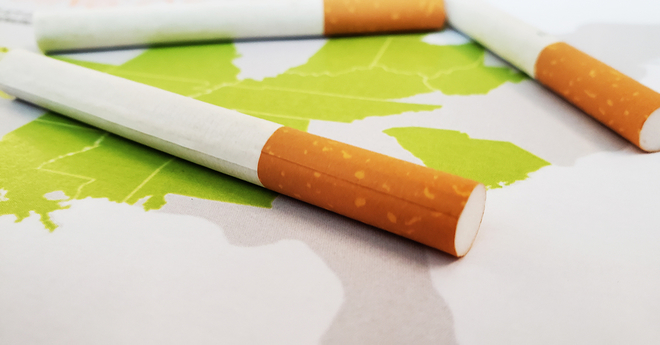What is your state doing about the leading preventable cause of death and disease?
o you know where your state stands when it comes to tobacco use and prevention? Our state fact sheets include state-specific information on tobacco use rates, the economics of tobacco use and control, state and local tobacco laws and prevention and cessation efforts.
Here are three takeaways from the latest state-level tobacco facts and figures:
Smoking rates remain high in some states, despite a national drop.
In 2015, 17.5 percent of adults and 10.8 percent of high school students in the U.S. smoked cigarettes, according to the U.S. Centers for Disease Control and Prevention.
But more than half of all states—29—have significantly higher percentages of people who smoke than the national average; for example, Arkansas (24.9 percent of adults and 15.7 percent of high school students), Kentucky (26 percent of adults and 16.9 percent of high school students) and West Virginia (25.7 percent of adults and 18.8 percent of high school students).
States continue to shortchange programs that prevent people from smoking and help smokers quit.
In fiscal year 2017, states brought in $26.6 billion from the 1998 tobacco settlement and tobacco taxes, but spent less than 2 percent of that on programs to curb tobacco use.
Only one state—North Dakota—funded tobacco control programs at the level the CDC recommended. Most states—29 and the District of Columbia—spent less than 20 percent of what the CDC recommended.
States and localities are passing more tobacco-related policies.
Research has shown that tobacco control policies, including banning the sale of flavored tobacco products, removing tobacco from pharmacies and raising the price of cigarettes, have great potential to slash smoking rates.
Recent years have seen an increase in state and local policy efforts aimed at tobacco. For example, laws banning pharmacies from selling tobacco products didn’t emerge until 2008 in San Francisco, and now more than 150 localities have passed similar laws. In just three weeks this summer, three states—New Jersey, Maine and Oregon—raised the legal minimum age to purchase tobacco from 18 to 21. In August, New York City passed seven tobacco-related measures, including one that raised the minimum price of a pack of cigarettes to $13.
For more information on tobacco in each state, read our state fact sheets.

